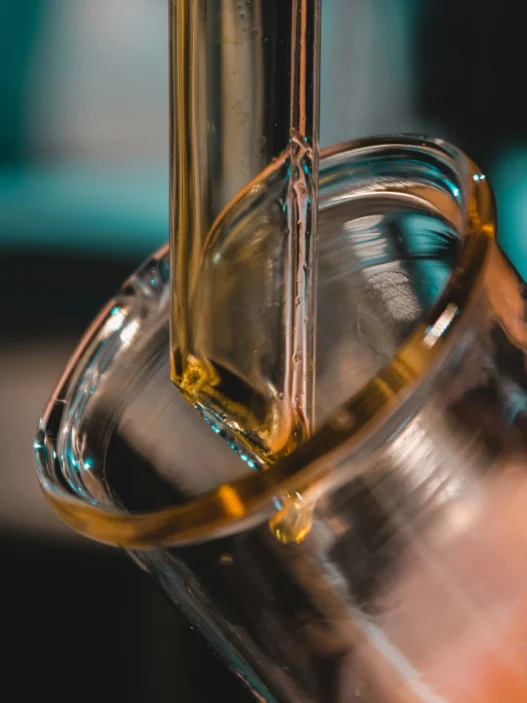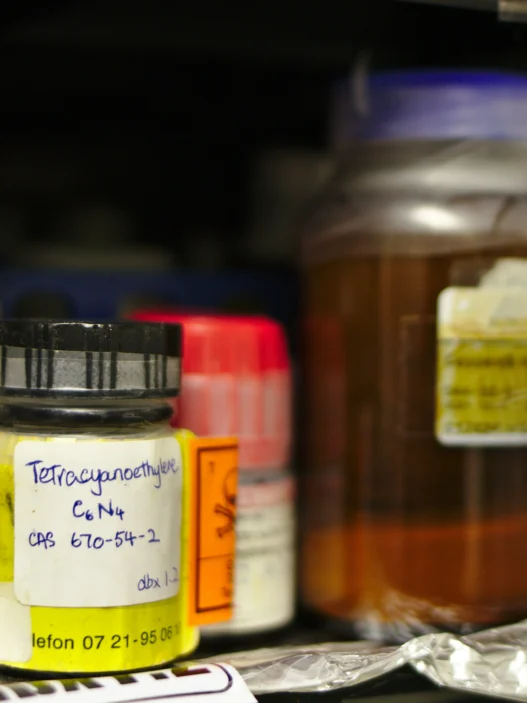4-Chloro-3-methylphenol, commonly known as PCMX, is a chemical compound with antiseptic properties that is utilized in a variety of everyday products. It is commonly found in hand sanitizers, soaps, and other personal care products due to its ability to effectively kill bacteria and microbes. Its disinfectant properties make it a crucial ingredient in promoting cleanliness and preventing the spread of illness in our daily lives.
Table of Contents:
- 💡 Commercial Applications
- ⚗️ Chemical & Physical Properties
- 🏭 Production & Procurement
- ⚠️ Safety Considerations
- 🔬 Potential Research Directions
- 🧪 Related Compounds
💡 Commercial Applications
4-Chloro-3-methylphenol, commonly known as PCMX, has numerous commercial and industrial applications. It is commonly used as an antiseptic and disinfectant in various products, such as hand sanitizers, soaps, and surface cleaners. Its powerful antimicrobial properties make it effective in killing bacteria, fungi, and viruses, making it a popular choice in healthcare settings.
In addition to its use as an antiseptic, 4-Chloro-3-methylphenol is also utilized in the preservation of paints, coatings, and textiles. Its ability to inhibit the growth of mold and mildew makes it a valuable additive in products that are susceptible to microbial degradation. Furthermore, it is used in the production of personal care items, including cosmetics and hair care products, to extend their shelf life and maintain product quality.
While 4-Chloro-3-methylphenol is primarily used in commercial and industrial applications, it also has potential drug and medication applications. It has been studied for its antiviral and antibacterial properties, making it a potential candidate for pharmaceutical formulations. Additionally, it is being investigated for its potential use in topical creams and ointments for treating skin infections and wounds. Further research is needed to explore its full potential in the field of medicine.
⚗️ Chemical & Physical Properties
4-Chloro-3-methylphenol appears as a white crystalline solid with a characteristic medicinal odor. This compound is often used for its antimicrobial properties in various industrial applications.
With a molar mass of 156.62 g/mol and a density of 1.33 g/cm³, 4-Chloro-3-methylphenol is heavier than common food items like sugar and salt. This chemical compound exhibits a denser nature compared to many substances found in everyday food products.
4-Chloro-3-methylphenol has a melting point of 80-82°C and a boiling point of 242-244°C. These temperatures are considerably higher than those of common food items like butter or chocolate. This compound displays a much higher heat resistance than many edible substances.
4-Chloro-3-methylphenol is sparingly soluble in water and exhibits a slightly viscous consistency. Its solubility and viscosity are much lower than those of common food items such as sugar or salt, which easily dissolve in water. This chemical compound displays distinct differences in these properties compared to substances commonly found in the kitchen.
🏭 Production & Procurement
4-Chloro-3-methylphenol, also known as p-Chloro-m-cresol, is produced through the chlorination of m-cresol. This reaction involves the substitution of a hydrogen atom in the methyl group of m-cresol with a chlorine atom, resulting in the formation of 4-Chloro-3-methylphenol. This process typically takes place in a controlled industrial setting with specific equipment and safety measures in place to ensure a successful and efficient production.
The procurement of 4-Chloro-3-methylphenol can be achieved through various chemical suppliers and manufacturers. In its solid form, it is typically packaged in drums or bags to facilitate handling and transportation. Due to its chemical nature, proper precautions must be taken when procuring and handling 4-Chloro-3-methylphenol to ensure safety and compliance with regulations. Additionally, transportation of this chemical compound is typically done using specialized containers and vehicles to prevent leaks or spills during transit.
After procurement, 4-Chloro-3-methylphenol can be transported via road, rail, or air depending on the distance and urgency of delivery. Specialized carriers equipped with containers suitable for hazardous materials are often used to transport this chemical compound safely and securely. Proper labeling and documentation are essential when transporting 4-Chloro-3-methylphenol to ensure compliance with regulations and to prevent any mishaps during transit.
⚠️ Safety Considerations
Safety considerations for 4-Chloro-3-methylphenol include the potential for skin and eye irritation upon contact. Proper personal protective equipment, such as gloves and safety goggles, should be worn when handling this chemical. In addition, it should be stored in a cool, dry, and well-ventilated area away from incompatible materials to prevent accidents or hazardous reactions.
The hazard statements for 4-Chloro-3-methylphenol indicate that it is harmful if swallowed, causes skin and eye irritation, and may cause respiratory irritation. Exposure to this chemical may result in serious health effects and should be avoided. It is important to handle 4-Chloro-3-methylphenol with caution and adhere to proper safety protocols to prevent harm.
Precautionary statements for 4-Chloro-3-methylphenol include recommendations to wear protective gloves, clothing, and eye protection when handling this chemical. In case of skin contact, it is advised to wash affected areas with plenty of soap and water. Furthermore, 4-Chloro-3-methylphenol should be used in a well-ventilated area to prevent inhalation of harmful vapors and fumes. Proper disposal methods and spill cleanup procedures should also be followed to minimize environmental impact.
🔬 Potential Research Directions
One potential research direction for 4-Chloro-3-methylphenol is its antimicrobial properties. With its known ability to inhibit the growth of bacteria and fungi, further studies could explore its potential as a novel antimicrobial agent.
Another possible avenue of research is the study of 4-Chloro-3-methylphenol’s environmental impact. investigations could be conducted to evaluate its biodegradability and potential harmful effects on ecosystems.
Studies could also focus on the synthesis and modification of 4-Chloro-3-methylphenol to enhance its stability and effectiveness. This could lead to the development of more potent derivatives with improved properties for various applications.
Finally, investigations could be carried out on the toxicological profile of 4-Chloro-3-methylphenol to determine its potential health risks and safe levels of exposure. This information would be crucial for regulatory agencies in establishing guidelines for its use in industrial and consumer products.
🧪 Related Compounds
One similar compound to 4-Chloro-3-methylphenol is 4-Nitro-3-methylphenol, which has a similar molecular structure but with a nitro group instead of a chlorine group attached to the aromatic ring. This compound is commonly used as an intermediate in the synthesis of dyes, pharmaceuticals, and other organic compounds. The presence of the nitro group imparts different chemical properties to this compound compared to 4-Chloro-3-methylphenol.
Another similar compound is 4-Bromo-3-methylphenol, which also shares a similar molecular structure with 4-Chloro-3-methylphenol but with a bromine atom in place of the chlorine atom. This compound is often used in organic synthesis as a building block for various pharmaceuticals and agrochemicals. The presence of the bromine atom can affect the reactivity and biological activity of this compound compared to 4-Chloro-3-methylphenol.
Furthermore, 4-Ethyl-3-methylphenol is another compound that bears resemblance to 4-Chloro-3-methylphenol in terms of molecular structure, but with an ethyl group attached to the aromatic ring instead of a methyl group. This compound is utilized in the preparation of fragrances and flavorings due to its pleasant odor. The difference in alkyl side chain length can have an impact on the physical and chemical properties of 4-Ethyl-3-methylphenol compared to 4-Chloro-3-methylphenol.





